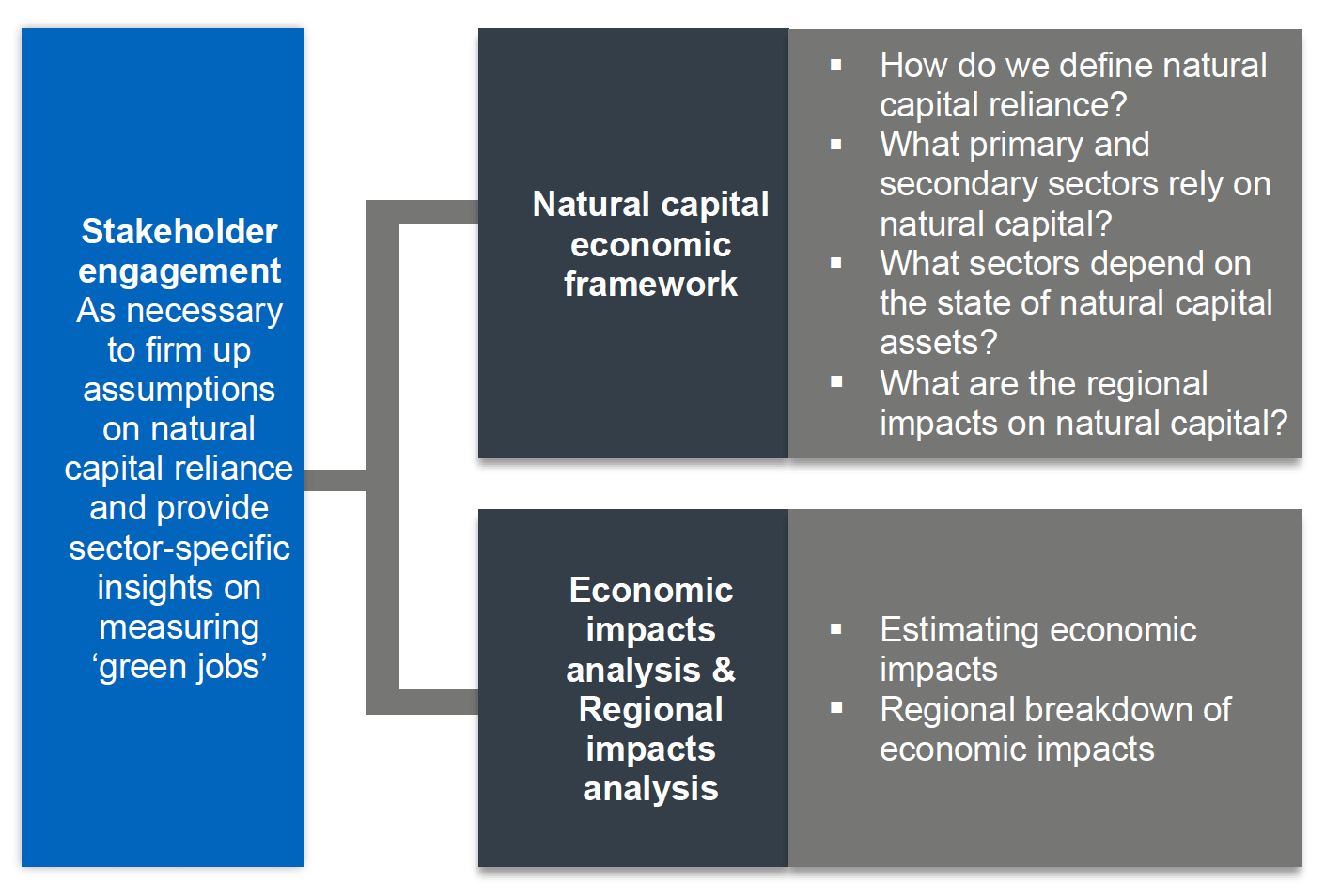Natural capital - importance to the Scottish economy: research
This research identifies sectors reliant on natural capital in Scotland and quantifies the economic value of these nature-dependent sectors at national and regional levels. The methodology values our economy's dependence on nature, estimating £40 billion economic output and 261,000 jobs supported.
Introduction
The Scottish Government (SG) commissioned WSP and Economics for the Environment Consultancy (eftec) to undertake a study on “The Importance of Natural Capital to the Scottish Economy”. The project commenced in December 2023 and was completed in April 2024. The aim of the study was to determine the sectors in Scotland that rely on high-quality natural capital, and to quantify the economic value of nature-dependent sectors at a national and regional geographic level. This involved measuring in economic terms something that existing economic statistics do not capture effectively. The method used therefore faced a trade-off between producing data that aligns to conventional economic statistics and approaches (i.e., the System of National Accounts), and using different approaches that more fully measure the economy’s reliance on natural capital.
Overall Project Approach
This project comprised two main components, as shown in Figure 1: (1) to develop a natural capital economic framework, and (2) to conduct economic impacts analyses and analyse regional impacts. Stakeholder engagement was important throughout the entirety of the project, with regular consultations with the Scottish Government Steering Group to endorse the assumptions, methodology and resulting analysis.

Report Objectives
This study outlines the methodology for developing the natural capital economic framework that enables an estimation of Scotland’s reliance on natural capital by industry. In particular:
- The natural capital economic framework analysed how reliant sectors are on natural capital, primarily by linking data from Scotland’s Natural Capital Accounts to industry Standard Industry Classification (SIC) codes.
- Following endorsement by the Steering Group, the framework was used to determine the data inputs and appropriateness of tools to conduct economic impacts analysis.
- A key aspect of the methodology was to develop a repeatable methodology that can be replicated and built upon by Scottish Government.
Strategic Context
Scottish Government strategy recognises that natural capital is important to an economy that supports the wellbeing of its citizens: it provides critical food and water sources, as well as the raw materials that support the production of goods. Natural capital is also recognised to generate intangible benefits, such as amenity of outdoor spaces for recreational enjoyment and climate regulating services (including air quality regulation, temperature and water regulation) both of which contribute to societal health and wellbeing.
Scottish Government’s National Strategy for Economic Transformation (NSET) outlines the overarching economic priorities and actions to achieve a ‘fairer, wealthier and greener’ country. Growth in green sectors such as sustainable land and marine management, urban green infrastructure, green finance, and research is a key priority of the NSET. The 2020 NatureScot report Progress towards a Green Recovery outlined the importance of a broad alliance of partners and actors within and across nature-based sectors. This underscores the importance of developing opportunities related to nature-related jobs and skills for meeting Scotland’s long-term climate and biodiversity targets.
This being said, natural capital is difficult to measure in economic terms as ecosystems are complex, and many of the benefits that are fundamental to human existence do not have a market value. Traditional economic indicators (e.g., gross domestic product (GDP), gross value added (GVA), and employment) do not capture non-market values of natural capital and ecosystem services. The market value of natural capital may not accurately reflect the relative importance of natural capital to an industry. The value of natural capital to production may be relatively lower than other products as inputs may not be priced or underpriced.
This has resulted in a limited understanding of how the economy relies on natural capital and the extent of impacts from environmental degradation – not just in Scotland, but also in the UK and globally. Measuring the value of natural capital is important to track progress against actions to achieve the NSET vision. This is reflected as a key priority in NatureScot’s Corporate Plan 2022-2026.
Report Structure
This report is structured as follows:
- This introduction chapter outlines the aims and objectives of the research and explains the purpose of this report and its structure, as well as the context for the research including an outline of the policy context for natural capital.
- The desktop review chapter explains the possible definitions for natural capital, the different top-down and bottom-up approaches to defining reliance on natural capital, and the inputs needed for the proposed approach.
- The methodology chapter provides a typology for analysing the importance of natural capital and a presentation of ecosystem services related to natural capital (provisioning, regulating, and cultural services).
- The economic impacts chapter presents the proportion of industries reliant on natural capital, as well as the regional considerations, together with an estimation of economic impacts (gross value added and employment effects).
- Finally, the conclusions and recommendations chapter concludes and presents potential future avenues for research.
Contact
Email: matylda.graczyk@gov.scot
There is a problem
Thanks for your feedback